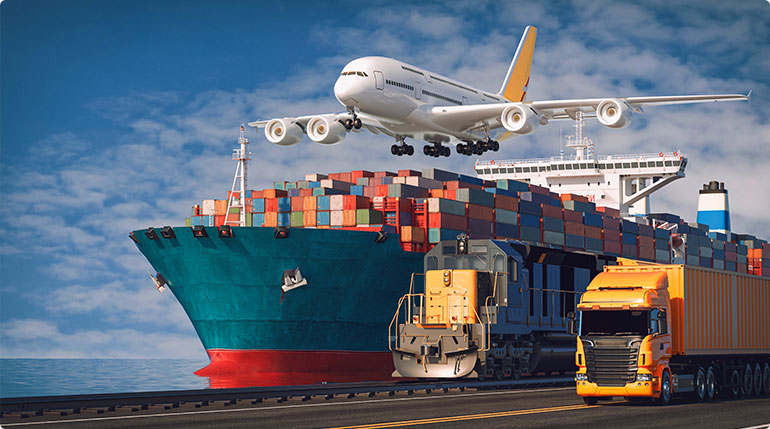Express Flight Services Large industrial and air projects typically involve significant investments, complex logistics, and specialized infrastructure or transportation solutions. These projects often span various industries, including construction, energy, manufacturing, aerospace, and more. Below is an overview of large-scale industrial and air-related projects, their components, and key considerations.
1. Large Industrial Projects
Industrial projects involve large-scale developments in sectors like construction, manufacturing, energy, and infrastructure. These projects often require extensive planning, heavy machinery, and coordination across multiple teams.
Examples of Large-Scale Industrial Projects
- Energy Projects:
- Oil refineries, gas plants, and renewable energy installations like wind farms and solar farms.
- Examples:
- Offshore wind turbine installations.
- Natural gas processing plants.
- Manufacturing Plants:
- Building facilities for automotive, electronics, or heavy equipment manufacturing.
- Examples:
- Tesla Gigafactories for electric vehicle and battery production.
- Large steel or aluminum plants.
- Infrastructure Development:
- Construction of highways, railways, bridges, tunnels, and ports.
- Examples:
- The Panama Canal expansion project.
- The construction of high-speed rail networks like the California High-Speed Rail.
- Industrial Complexes:
- Multi-industry complexes that include chemical processing, material production, and logistics hubs.
- Examples:
- Industrial zones in China, India, and the Middle East, like Jebel Ali Free Zone (UAE).
Key Components of Industrial Projects
- Heavy Equipment and Machinery:
- Earth-moving equipment, cranes, drilling rigs, and manufacturing machinery.
- Project Management:
- Coordination of engineers, designers, contractors, and supply chain managers.
- Logistics and Transportation:
- Moving heavy or oversized equipment to project sites via road, rail, sea, or air freight.
- Environmental Considerations:
- Managing emissions, waste, and energy use to comply with regulations and minimize environmental impact.
Challenges in Industrial Projects
- Cost Overruns: Delays or unexpected expenses can escalate project budgets.
- Supply Chain Disruptions: A shortage of materials or transportation delays can impact timelines.
- Regulatory Compliance: Navigating permits, safety requirements, and environmental laws.
- Skilled Workforce: Finding and retaining skilled labor to manage complex operations.
2. Large Air Projects
Air projects primarily focus on the development of aviation-related infrastructure, manufacturing, or logistical operations. These projects often involve cutting-edge technology and significant capital.
Examples of Large-Scale Air Projects
- Airport Development:
- Construction or expansion of airports to manage increased air traffic and improve connectivity.
- Examples:
- The expansion of Istanbul Airport (Turkey), one of the largest airports in the world.
- Beijing Daxing International Airport (China), featuring advanced design and passenger capacity.
- Aerospace Manufacturing:
- Production facilities for aircraft, drones, satellites, and space exploration vehicles.
- Examples:
- Boeing and Airbus manufacturing plants.
- SpaceX Starship production and launch sites.
- Air Traffic Management Systems:
- Developing advanced systems for controlling and monitoring air traffic to improve safety and efficiency.
- Examples:
- Implementation of AI-based air traffic control systems.
- Modernizing navigation systems for international airports.
- Air Cargo Hubs:
- Establishing logistics hubs to support the growing demand for air freight.
- Examples:
- Amazon’s Air Hub in Kentucky, USA.
- FedEx Super Hub in Memphis.
- Military and Defense Projects:
- Developing airbases, fighter jets, and defense systems for military applications.
- Examples:
- F-35 fighter jet production programs.
- Advanced UAV (drone) projects for reconnaissance and combat.
Key Components of Air Projects
- Advanced Engineering:
- Designing and constructing aircraft, airport facilities, and air traffic control systems.
- High-Tech Materials:
- Use of lightweight composites, advanced metals, and cutting-edge avionics in aircraft manufacturing.
- Regulatory Compliance:
- Adhering to international aviation standards set by organizations like ICAO and FAA.
- Integration of Technology:
- Incorporating automation, AI, and IoT systems for smarter airports and aircraft.
Challenges in Air Projects
- High Costs: Both infrastructure and aircraft manufacturing require massive investments.
- Environmental Concerns: Reducing emissions and noise pollution while meeting sustainability goals.
- Safety Standards: Ensuring strict compliance with safety regulations to avoid accidents.
- Technological Complexity: Managing advanced systems and integrating new technologies.
3. Logistics and Transportation for Large Projects
Both industrial and air projects require robust logistics systems to transport materials, equipment, and personnel.
Modes of Transportation
- Road Freight:
- Used for last-mile delivery of heavy equipment or materials to project sites.
- Rail Freight:
- Ideal for moving bulk materials like steel, cement, or coal over long distances.
- Sea Freight:
- Critical for transporting oversized or heavy equipment like turbines, cranes, and aircraft parts.
- Air Freight:
- Used for transporting high-value or time-sensitive cargo, such as aerospace components.
Specialized Logistics for Large Projects
- Oversized and Heavy Cargo:
- Using flatbed trucks, heavy-lift ships, or transport aircraft like the Antonov An-225.
- Project Cargo Management:
- Coordinating the transportation of multiple shipments to meet project deadlines.
- Customs and Compliance:
- Managing international shipping regulations and permits.
4. Sustainability in Large Projects
Both industrial and air projects are under increasing pressure to prioritize sustainability:
- Renewable Energy Use: Incorporating solar, wind, or other renewable sources into projects.
- Green Aviation: Developing fuel-efficient aircraft and sustainable aviation fuels (SAF).
- Carbon Offsetting: Implementing carbon-neutral strategies for large-scale operations.

